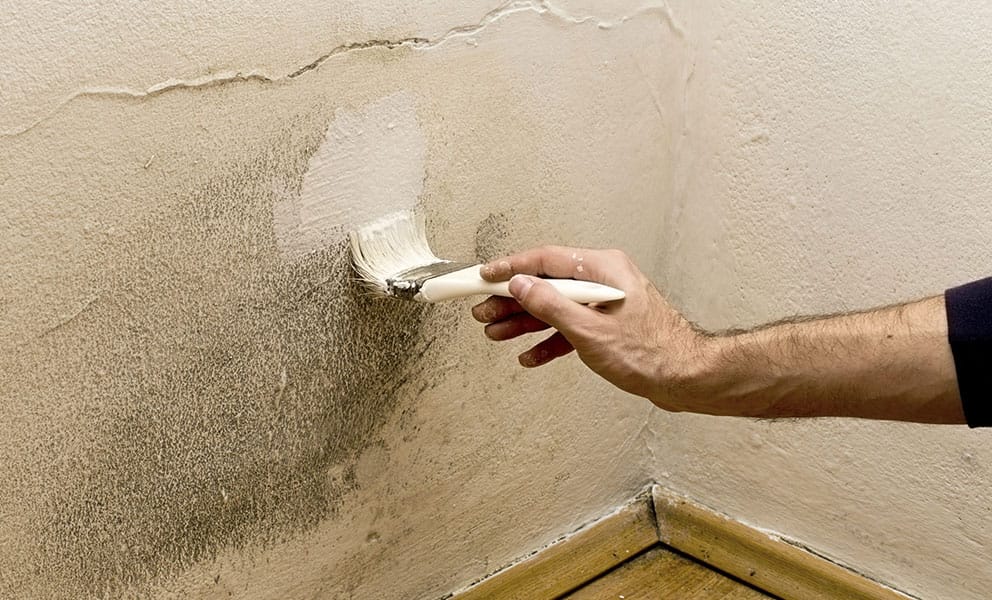
Call our team
01484 442420Find An Applicator
Menu
close

As well as causing respiratory issues, damp walls can be an eyesore. Many people reach straight for the paint to get rid of them. But does it work? In this post, we’ll discuss how paint for damp walls works and whether it’s the right option for you.
If you’re looking to use paint for damp walls, the first thing you’ll need is the right paint. Regular paint will not adhere to damp walls or cover the stain properly. Specialist ‘damp-proof’ paints are formulated to tackle both of those issues. However, that comes with its limitations, hence the inverted commas!
Damp-proof paints are ‘damp proof’ in the sense that they allow moisture to escape and prevent mould from regrowing on your walls. They’re ideal when you’ve had a damp problem and want to get rid of the lingering reminder.
If you have a damp patch on your wall from a roof leak that has been fixed, for example, you can scrub off any mould, dry out the area as best you can, sand down, then paint over with a damp-proof paint.
As long as the cause of the damp (the roof leak in this case) is fixed, your damp patch will be eliminated. What those paints won’t do, however, is fix the damp problem on their own.
Whether or not paint works for damp walls depends on how you’re using it. Paint will never fix damp or even hide it for that long. If you paint over untreated damp with even the best paint, the moisture will cause the paint to peel or bubble and you’ll find yourself needing to paint over it again and again.
If you want paint for damp walls to work, you’ll need to tackle the cause of the damp. While leaks are at fault in some cases, damp is usually down to excessive moisture, poor ventilation and cold walls.
Moisture is naturally released in homes by cooking, washing and even breathing. Without adequate ventilation, the moisture becomes trapped. It’s then drawn to the coldest surfaces, which is why you’ll often see windows getting fogged up, as well as damp walls.
Sometimes, making a few small changes is all it takes to stop your walls getting damp. Open windows or use extractor fans when cooking, washing or showering, and try to keep your home at a comfortable temperature of 18°C or more. If that works, paint for damp walls is a good option.
However, all too often, the walls themselves are the problem. Some homes are poorly ventilated by design, so moisture levels will still be a problem. If the walls aren’t insulated properly, they’ll stay cold despite your best efforts, and continue to attract that moisture. (That’s not mentioning the impossible balancing act of maintaining a comfortable temperature when you also need to keep windows open for ventilation!)
If this sounds familiar, CorkSol SprayCork can help. It creates a moisture-resistant coating that damp and condensation can’t form on. The internal wall coating also improves thermal insulation to keep heat inside your home. It’s naturally breathable and can be skimmed over so you can decorate as you please.
Paint for damp walls does have its uses. However, if you’re trying to eliminate damp walls rather than just cover up previous issues, SprayCork is what you’re after. For more information on SprayCork or to find your nearest approved applicator, don’t hesitate to contact the CorkSol team.
"*" indicates required fields